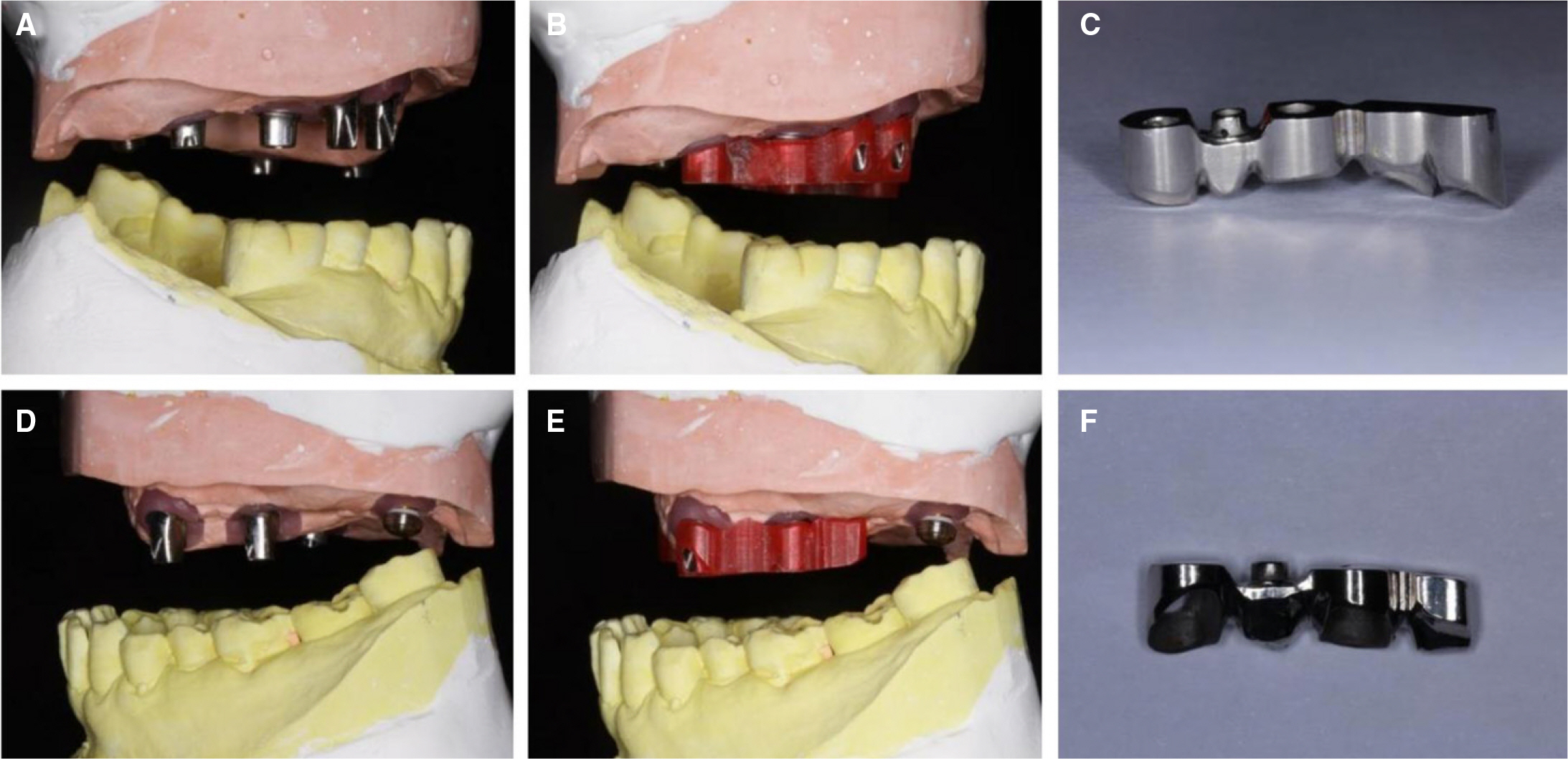J Korean Acad Prosthodont.
2016 Apr;54(2):146-151. 10.4047/jkap.2016.54.2.146.
Rehabilitation of edentulous maxilla with implant-supported milled bar overdenture using CAD/CAM customized abutment: A case report
- Affiliations
-
- 1Department of Prosthodontics, School of Dentistry, Yonsei University, Seoul, Republic of Korea. sunjai@yuhs.ac
- KMID: 2162391
- DOI: http://doi.org/10.4047/jkap.2016.54.2.146
Abstract
- In patients with fully edentulous maxilla, fabrication of implant-supported overdenture can be a viable treatment option, when a minimum of six implants were strategically placed. Among several attachment systems used for implant-supported overdentures, milled-bars prevent rotational movement of denture, thus showing great stability, and have the advantage of splinting multiple implants with each other. In this case report, a milled-bar supported overdenture was fabricated for a patient suffering from condition of fully edentulous maxilla with severe ridge resorption in the anterior residual ridge. Seven implants composed of three different systems were effectively utilized by CAD/CAM customized abutment and cement-retained milled bar.
MeSH Terms
Figure
Reference
-
1.Doundoulakis JH., Eckert SE., Lindquist CC., Jeffcoat MK. The implant-supported overdenture as an alternative to the complete mandibular denture. J Am Dent Assoc. 2003. 134:1455–8.
Article2.van Kampen F., Cune M., van der Bilt A., Bosman F. Retention and postinsertion maintenance of bar-clip, ball and magnet attachments in mandibular implant overdenture treatment: an in vivo comparison after 3 months of function. Clin Oral Implants Res. 2003. 14:720–6.
Article3.Petropoulos VC., Smith W., Kousvelari E. Comparison of retention and release periods for implant overdenture attachments. Int J Oral Maxillofac Implants. 1997. 12:176–85.4.Trakas T., Michalakis K., Kang K., Hirayama H. Attachment systems for implant retained overdentures: a literature review. Implant Dent. 2006. 15:24–34.
Article5.Krennmair G., Krainhöfner M., Piehslinger E. Implant-supported mandibular overdentures retained with a milled bar: a retrospective study. Int J Oral Maxillofac Implants. 2007. 22:987–94.6.Zarb GA., Bolender CL., Eckert SE., Fenton AH., Jacob RF., Mericske-Stern R. Prosthodontic treatment for edentulous patients: Complete dentures and implant-supported prestheses. 12th ed.Mosby;2004.7.Zitzmann NU., Marinello CP. Treatment plan for restoring the edentulous maxilla with implant-supported restorations: removable overdenture versus fixed partial denture design. J Prosthet Dent. 1999. 82:188–96.
Article
- Full Text Links
- Actions
-
Cited
- CITED
-
- Close
- Share
- Similar articles
-
- Maxillar implant-retained overdenture using CAD/CAM milled zirconia bar with PEKK sleeve: a case report
- Rehabilitation using mandibular implant overdenture with CAD/CAM milled bar: A case report
- Implant-supported milled bar overdenture with two implant surgical guides
- Detachable zirconia prosthesis using Milled bar and ADDTOC attachment in partial edentulous mandible: A case report
- CAD-CAM fabricated Milled-bar and Implant Overdenture after Reconstruction with a Fibular Free Flap: A Clinical Report







